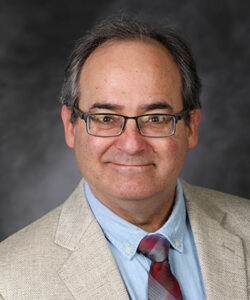Introducing The Conversation
New partnership will help UND show the world our faculty’s important work
You know about physical leverage, in which a user employs a tool – a lever – to do more work with less force. You likely know about business leverage, in which companies amplify a small amount of borrowed money into outsized returns.
Now there’s academic leverage, in which a faculty member or graduate student can toil for a few evenings on an article, then watch as, in many cases, the article starts popping up on news sites and drawing readers by the thousands – or even tens of thousands – around the globe.
UND academics now can take part in that latter phenomenon in new and more-doable-than-ever ways. That’s because the University now is a supporting partner with The Conversation, a unique nonprofit dedicated to sharing the knowledge and experience of scholars with the general public.
The Conversation’s approach
The Conversation publishes short articles (800 to 1,000 words) that have been written by academics and edited by journalists for the general public. The articles look at modern life and current events through a unique lens: the lens of the scholar – the expert who has studied the topic in depth and achieved a certain mastery.
But note the line “edited by journalists” in the paragraph above. The Conversation employs its own staff of editors, each of whom has both a specialty field – such as education or religion – and broad experience in journalism. Those editors work one on one with the scholars to make sure the articles are on point, of interest to the general public and free of academic jargon.
“It’s a daily newsroom with editors, all of whom are journalists, and the reporters are all academics,” said The Conversation’s former U.S. Managing Editor Maria Balinska to the Nieman Foundation for Journalism in 2015.
“We take the news agenda as our starting point, then go to academics to provide distinctive, original and evidence-based context to the news cycle.”
Republished around the world
But that’s just the start of the process. The real magic happens once the article appears on The Conversation’s website, TheConversation.com.
Because thanks to a Creative Commons license, articles from The Conversation can be republished for free by media outlets around the world. And thanks to the fact that The Conversation’s articles move on The Associated Press wire, those articles can and do wind up being republished by The Washington Post, The Chicago Tribune, CNN, Scientific American and more than 22,000 other outlets.
“In January 2014, an Ohio State University faculty member published the university’s first article on what was then a little-known website called The Conversation,” a story by Ohio State’s news service reported in 2020.
“Now, nearly seven years later, 144 Ohio State researchers have written 301 articles sharing their knowledge, analysis and expertise with people worldwide. Earlier this month, Ohio State faculty passed a milestone: Their contributions had received more than 10 million reads.”
If you’re a faculty member or graduate student at UND and the above sparks your interest, there are three ways to get an article published.
First, The Conversation publishes articles that are pitched by a scholar and accepted. Second, the organization sends queries to academics who’ve expressed interest in writing about a topic or have special background in an area.
And third, The Conversation sends out a daily email in which it solicits writers on topics of current interest. For example, among its other call-outs in its “Expert Requests” email of Thursday, Sept. 15, The Conversation says it is seeking “scholars of nonprofit law, philanthropy, business and philosophy” who could put into perspective the news that Yvon Chouinard is turning his company, Patagonia, into a charitable trust.
UND Communications can help
In all three of the above cases, UND’s Communications team stands ready to help. The team has a lot of information about The Conversation’s processes and stands ready to help scholars refine ideas and craft pitches to the organization.
With that in mind, here are The Conversation’s guidelines for getting a pitch accepted:
- Is the idea of interest to a general audience? The Conversation’s articles are read across the United States and internationally by non-academics. What does a layperson want or need to know?
- Is the pitch timely? Timeliness can mean many things: new research, analysis of something in the news, commentary based on events, historic anniversaries, big ideas in the academic’s field and more. Why should a reader care now?
- Is the academic an expert in what they are writing about?
- Can the academic cover the topic in 1,000 words or fewer? The Conversation’s articles are aimed not at being comprehensive, but rather at making critical points that the public needs to be aware of.
“We appreciate the opportunity to share the expertise of our faculty with the world,” said Brad Rundquist, dean of the College of Arts & Sciences at UND.
“Our faculty members offer a wide range of research and knowledge, and the partnership with The Conversation provides a new avenue for them to apply their scholarship to timely topics and to reach a broader audience.”
For more information, visit The Conversation’s website, where extensive information can be found. Some specific links that may help include:
- An introduction to The Conversation
- Why write for us?
Thinking about writing for The Conversation? An editor outlines the benefits for academics. - Ten ways that The Conversation is different
- How to pitch an article idea
In addition, the following video asks the question, “Why you should write for The Conversation,” and consults with academics from across America for the answer. Ronald Hall, professor of social work at Michigan State University, had this to say: “I think The Conversation is the best invention to come along in academia in the past 15 or 20 years.”



